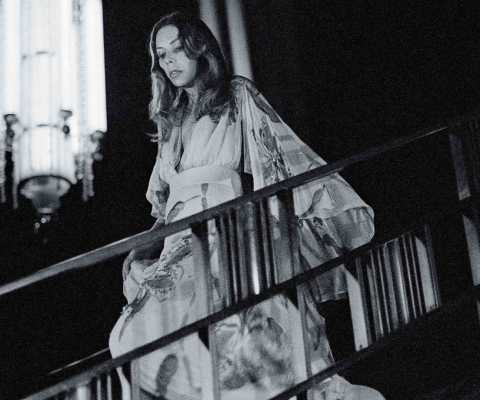After a mostly successful run that continued until Aliens vs. Predator: Requiem, the Predator franchise hasn’t found a way to reboot the series. Predators cast Adrien Brody and Topher Grace against type, and audiences didn’t accept those choices, resulting in another reboot several years later. Then The Predator bombed at the box office, despite bringing back original Predator cast member Shane Black as writer/director. Because we live in an age where franchises never die, 20th Century went back to the drawing board to see what went wrong.
Maybe audiences can’t connect with Predator stories without the proximity of Vietnam. Perhaps the Predator, unlike its xenomorph cohort, lacks a potent metaphor to tap. Whereas the xenomorph represents the threat of sexual violence or the cruel indifference of the universe, the Predator… likes to hunt. Predators posited the creature as a parable for what happens to men and women after years of violence. Specifically, where Brody notes, “There is no hunting like the hunting of a man. And those who’ve hunted armed men long enough, and like it, never really care for anything else.” However, the film kept hammering those themes often and without subtlety. By the time Isabelle (Alice Braga) realizes “we’re all predators,” the audience checked out.
The less said about The Predator, the better. But four years passed and cleansed the palate, so 20th Century is trying again, and trying something different too. Don’t mistake the film’s launch on Hulu (and Disney+ in Canada) as an indicator of poor quality. Disney couldn’t have HBO Max land initial streaming rights under the old 20th Century release deal, so they sent it straight to one of their arms.
Prey sets the nominal killing machine on the Great Plains in 1719. Amber Midthunder, who stole several scenes in FX’s Legion, gets the lead here as Naru, a Comanche warrior. Raised in the long shadow of her brothers and cousins, Naru learned much, but they expected nothing from her. It’s only when her camp starts dying that she gets to make her name. They assume the violence is coming from a rival tribe. Unbeknownst to her people, the Predator is stalking and picking off hunters with ease. Despite the enemy’s superior firepower and the loss of her tribe, Naru will bring the fight to him.
Midthunder had a small but memorable role in Hell or High Water, then flourished as a supporting character in FX’s Legion, but proves she is a lead here. As the film’s emotional core, Naru subverts the princess narrative but does so in an R-rated action film. The Predator films have always been about survival, yet Midthunder powerfully conveys just how strong the will to live is, even when fighting insurmountable odds. She’s always had the makings of a star, and it’s a thrill to see her get the opportunity in Prey. Hopefully, with more opportunities in the future. Along with Midthunder, the other members of the Indigenous cast include Julian Black Antelope, Stormee Kipp, Michelle Thrush, and newcomer Dakota Beavers.
Set 300 years ago roughly, the Predator doesn’t have the full toolbelt we are accustomed to seeing. It still has heat-vision and trademark claws, but the appearance is appreciably different. Gone are the plasma cannon and metal helmet it traditionally dons. The mandibles hide behind a bone mask, making this Predator look more feral and hulking. This Predator inspires a more primal sense of fear than it did in the past. Watching Naru try to kill the ferocious creature with ingenuity, it’s hard not to fear for her. Director Dan Trachtenburg revels in teasing the worst possible scenario and watching Naru wriggle out for ten straight minutes. Before you go, how is Naru supposed to defeat a technologically advanced alien? Remember, Dutch (Arnold Schwarzenegger) managed to do it with mud and lumber.
Trachtenburg surprised audiences by making a quality sequel to Cloverfield on the sly, so it wouldn’t surprise anyone to see him do it again. True, 10 Cloverfield Lane didn’t have the scope of its predecessor, yet with more developed characters played by Mary Elizabeth Winstead and John Goodman in tight quarters, the thrill was still there. Similarly, Prey dials back the excess that doomed the last two reboots. In doing so, the filmmakers created the best sequel in the Predator franchise.
The dialogue is sparse. Trachtenburg conveys the story through the action onscreen, leaving the actors to perform with only their bodies as a canvas. Without exposition dumps to move things along, Prey can only show, not tell. And the showing is no less impressive. The Great Plains provide a spectacular vista for cinematographer Jeff Cutter. While the vast countryside is beautiful, Cutter knows how to turn all that open space into a threat. Prey also benefits from avoiding expanded continuity or providing a massive, spectacle-driven third act. We know that the Predators come and go and that none of the characters we see figure into other pictures. Any character can die at any time, which escalates the stakes. Prey focuses solely on being a solid thriller with little frills. And the film does it well enough that it’s easy to see the approach fitted to another setting.
Predator during the Napoleonic Wars? Maybe the Alaskan tundra? Or even the Gold Rush. As long as the film is tightly wound and well-acted as Prey, I’ll watch them fight anywhere.






Comments